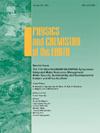Hydrological dynamics of the shire river: Insights from baseflow and recession analysis
IF 3
3区 地球科学
Q2 GEOSCIENCES, MULTIDISCIPLINARY
引用次数: 0
Abstract
The Shire River, a vital waterway in Malawi, plays a pivotal role in the country's economy, serving as a source of electrical power and irrigation for surrounding communities. This study investigates the hydrological dynamics of the Shire River by examining its flow components and the influence of baseflow under varying climatic conditions. Through meticulous baseflow separation using the Eckhardt recursive digital filter and recession analysis, Lake Malawi emerges as the primary contributor to the river's baseflow, sustaining approximately 80%–82% of total flows annually of which about 78% is contributed during wet seasons. Moreover, an inverse relationship between baseflow and rainfall is observed, highlighting the significance of baseflow augmentation during drier periods. Baseflow analysis of wettest and driest years further elucidates precipitation's impact on baseflow fluctuations, emphasizing the intricate interplay between precipitation patterns and baseflow dynamics. Therefore, to ensure the sustainable management of the Shire River, it is crucial to implement policies that support the conservation of groundwater resources and the efficient allocation of water during varying climatic conditions. Overall, this study provides valuable insights into the hydrological processes of the Shire River, contributing to enhanced understanding and sustainable management of this essential water resource.
希尔河的水文动态:基流和衰退分析的启示
希尔河是马拉维的一条重要水道,在该国经济中发挥着举足轻重的作用,是周边社区的电力和灌溉来源。本研究通过考察希尔河的流量成分以及不同气候条件下基流的影响,研究了希尔河的水文动态。通过使用埃卡递归数字滤波器和衰退分析对基流进行细致的分离,马拉维湖成为该河流基流的主要贡献者,每年维持约 80%-82% 的总流量,其中约 78% 来自雨季。此外,基流与降雨量之间存在反比关系,这突出表明了在较干旱时期增加基流的重要性。对最潮湿年份和最干旱年份的基流分析进一步阐明了降水对基流波动的影响,强调了降水模式与基流动态之间错综复杂的相互作用。因此,要确保石勒河的可持续管理,关键是要实施相关政策,支持在不同气候条件下保护地下水资源和有效分配水资源。总之,这项研究为了解石勒河的水文过程提供了宝贵的见解,有助于加强对这一重要水资源的理解和可持续管理。
本文章由计算机程序翻译,如有差异,请以英文原文为准。
求助全文
约1分钟内获得全文
求助全文
来源期刊

Physics and Chemistry of the Earth
地学-地球科学综合
CiteScore
5.40
自引率
2.70%
发文量
176
审稿时长
31.6 weeks
期刊介绍:
Physics and Chemistry of the Earth is an international interdisciplinary journal for the rapid publication of collections of refereed communications in separate thematic issues, either stemming from scientific meetings, or, especially compiled for the occasion. There is no restriction on the length of articles published in the journal. Physics and Chemistry of the Earth incorporates the separate Parts A, B and C which existed until the end of 2001.
Please note: the Editors are unable to consider submissions that are not invited or linked to a thematic issue. Please do not submit unsolicited papers.
The journal covers the following subject areas:
-Solid Earth and Geodesy:
(geology, geochemistry, tectonophysics, seismology, volcanology, palaeomagnetism and rock magnetism, electromagnetism and potential fields, marine and environmental geosciences as well as geodesy).
-Hydrology, Oceans and Atmosphere:
(hydrology and water resources research, engineering and management, oceanography and oceanic chemistry, shelf, sea, lake and river sciences, meteorology and atmospheric sciences incl. chemistry as well as climatology and glaciology).
-Solar-Terrestrial and Planetary Science:
(solar, heliospheric and solar-planetary sciences, geology, geophysics and atmospheric sciences of planets, satellites and small bodies as well as cosmochemistry and exobiology).
 求助内容:
求助内容: 应助结果提醒方式:
应助结果提醒方式:


